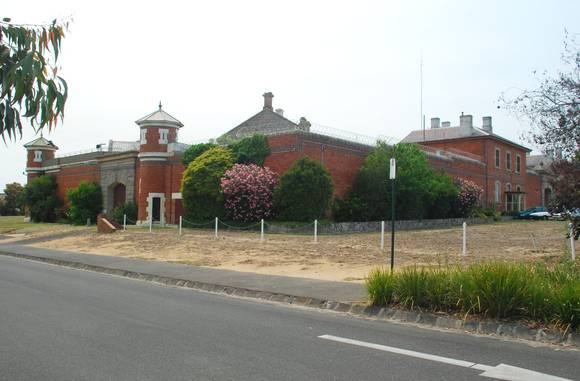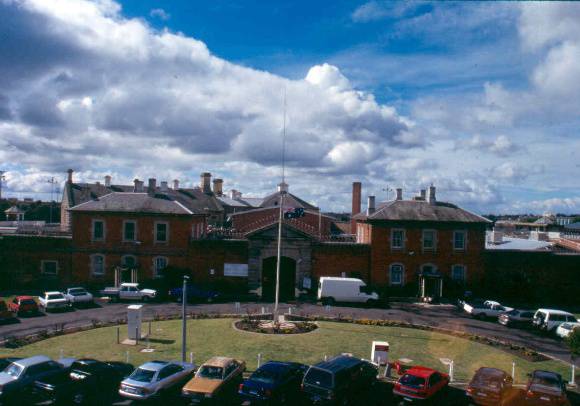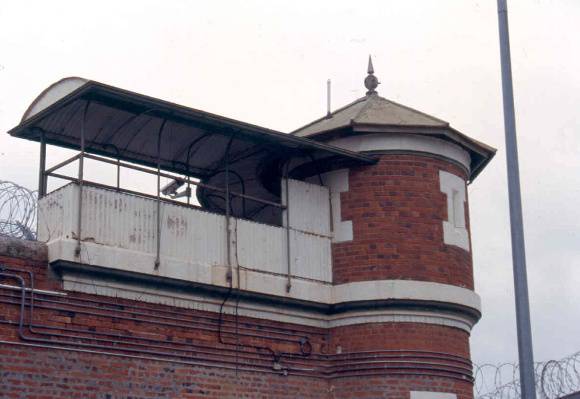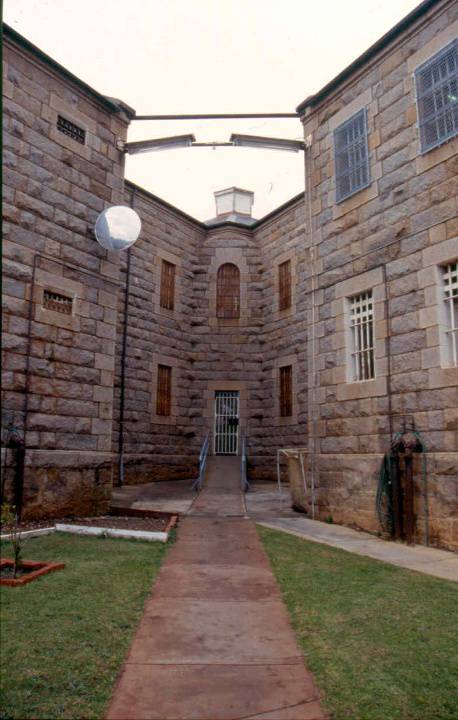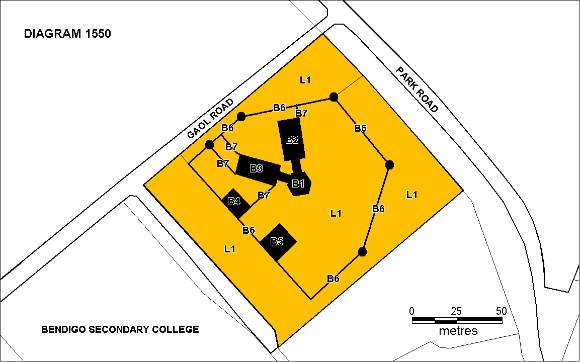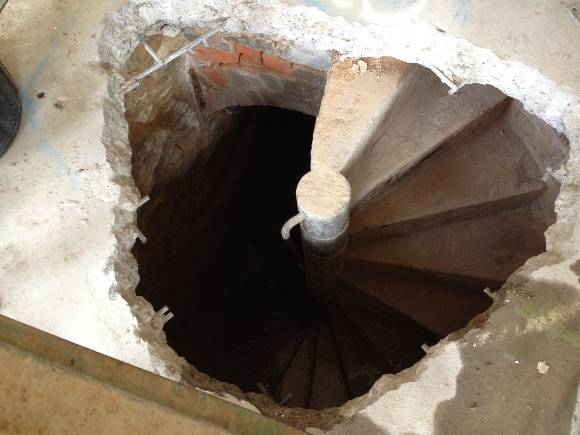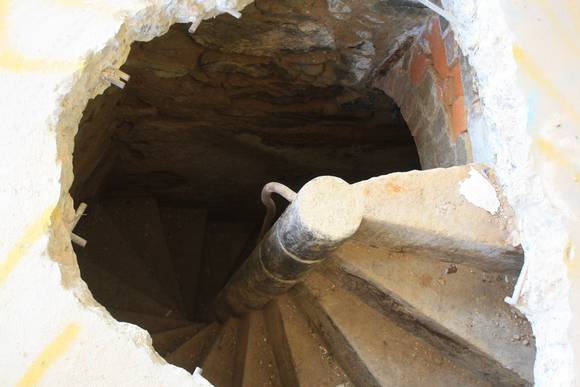| Back to search results » | Back to search page » |
|
FORMER BENDIGO GAOL
Other NamesHM PRISON BENDIGO , SANDHURST GAOL , BENDIGO GAOL Location10-20 GAOL ROAD BENDIGO, GREATER BENDIGO CITY
File NumberDLevelRegistered |
|
Statement of Significance
What is significant?
Bendigo Prison Complex was built as Sandhurst Gaol in 1861-64 on a hill overlooking the town. Designed on the panopticon principle by Samuel Wright and C.G. Ross of Victoria's Public Works Department, the prison retains the major fabric of its two original cell wings, central hall, and external wall, residences and towers, although some integrity has been lost by the construction of modern buildings within its former yards. Original cell wings and gateways were built using Harcourt granite in striking contrast to the walls and quarters which were made of red brick with granite footings. The essential architectural character of the building is generally classical, with walls and towers resembling the embattlements of a medieval castle. The gaol originally housed up to eighty male and female prisoners, but after 1896 all female prisoners were transferred to Pentridge Prison in Melbourne. Apart from an interlude in 1939-53 when the prison was used as a military detention centre, it has been in continuous use as a gaol since completion in 1864. After renovations in 1953 the complex reopened in 1954 as a modern training prison. The original chapel and administration wing were destroyed by fire in 1959 and rebuilt in a modern manner. Post 1958 additions include a visitor's centre and a number of workshops for the use of prisoners as well as a large industries building outside the main walls to the north east.
How is it significant?
Bendigo Prison complex is of historical and architectural significance to the State of Victoria.
Why is it significant?
HM Prison Bendigo is of historical significance as an example of a regional gaol built in Victoria during the mid nineteenth century according to the latest British concept of prison design which involved the radiating 'panopticon' principle that was a notable success at the Pentonville Model Prison (1842) and elsewhere. Originally conceived by the utilitarian philosopher and economist Jeremy Bentham, panopticon prisons had cells in wings or arms projecting from a central hall where a small number of guards could watch over the whole establishment.
HM Prison Bendigo is of historical significance as a place of execution. A gallows was erected in one of the cell wings in June 1876 and three prisoners hanged between November 1885 and September 1897 were buried in the grounds.
HM Prison Bendigo is also of historical significance due to its usage as a detention centre during the Second World War for military personnel who had committed various offences including absence without leave.
HM Prison Bendigo is of historical significance as one of Victoria's earliest gaols and as the oldest operating gaol in the State. It is also of historical significance for its potential to illustrate mid nineteenth century attitudes in Victoria to criminals and incarceration. Although sewerage, heating, and other services have been provided to individual cells in recent years, the cramped nature of the building's accommodation and the uncompromising nature of its materials are evidence of the severity of prison conditions when the building was constructed, and for much of its history.
HM Prison Bendigo is of architectural significance as a representative and largely intact example of the Pentonville prison model in Australia. Although the complex is stylistically similar to eight other contemporary gaols in Victoria, it is architecturally important for its unusual clarity of layout, the integrity of its cell wing interiors, the intimacy of scale of the cell block as a whole, and the striking character imparted by the Harcourt Granite used for the exteriors of the cell wings.
Group
Law Enforcement
Category
Gaol/Lock-up


